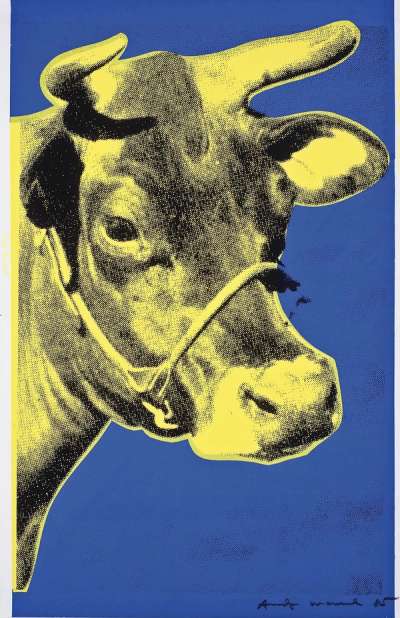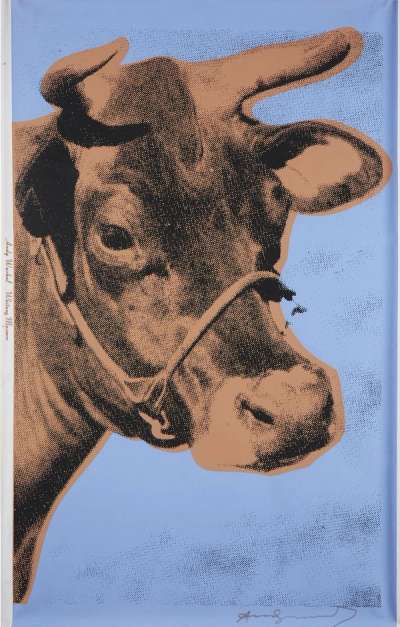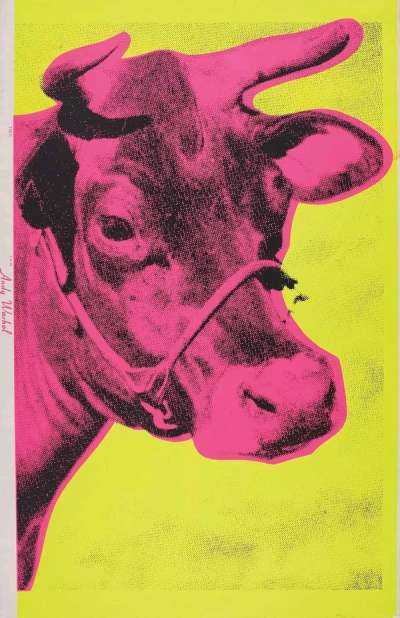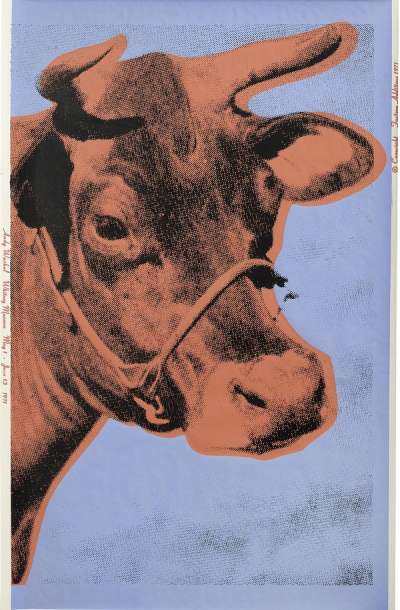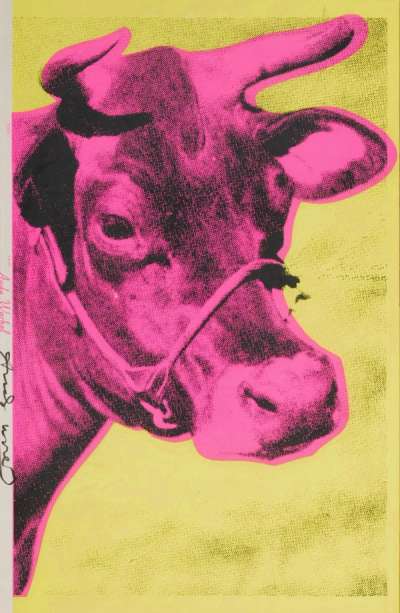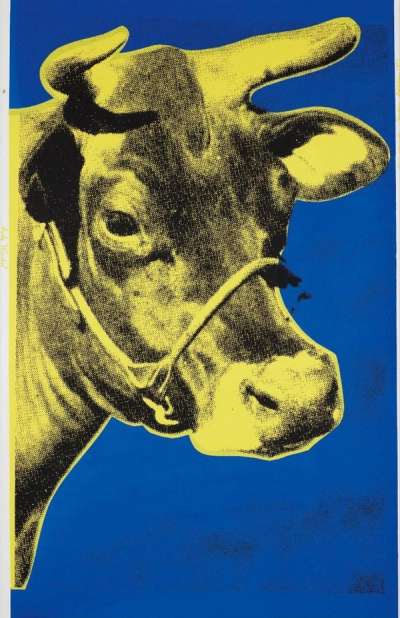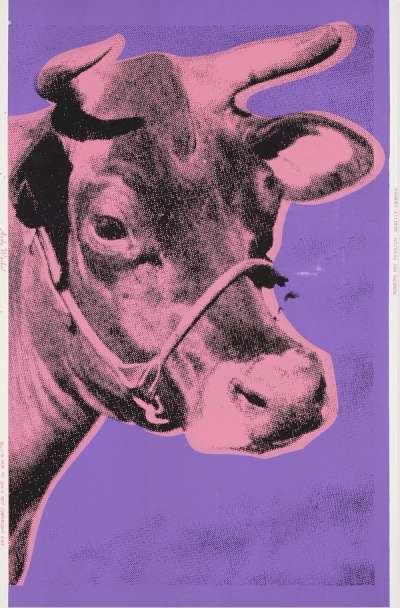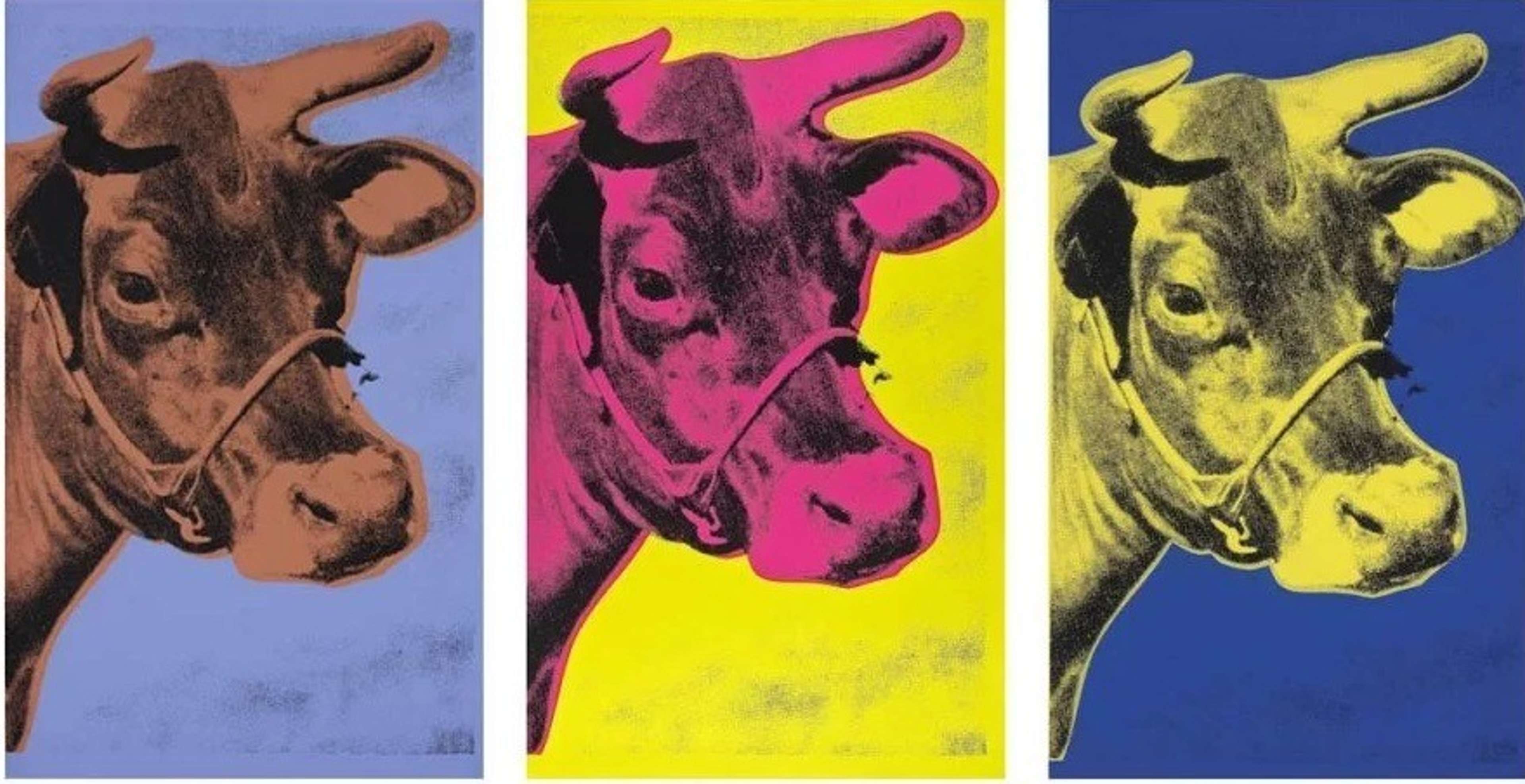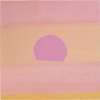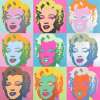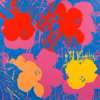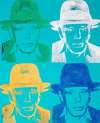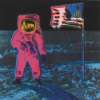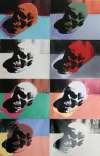Cow
Incongruous among Andy Warhol’s depictions of glamorous celebrities, Warhol undertook his Cow series—creating prints, and wallpapering a room at the Leo Castelli Gallery— in response to the prompting of famous Pop Art dealer, Ivan Karp, offering a unique vision of the ‘vulgar’ and ‘pastoral’ character of cows.
Andy Warhol Cow For sale
Cow Value (5 Years)
Works from the Cow series by Andy Warhol have a strong market value presence, with 258 auction appearances. Top performing works have achieved standout auction results, with peak hammer prices of £53331. Over the past 12 months, average values across the series have ranged from £2907 to £35000. The series shows an average annual growth rate of 3.77%.
Cow Market value
Auction Results
| Artwork | Auction Date | Auction House | Return to Seller | Hammer Price | Buyer Paid |
|---|---|---|---|---|---|
 Cow (F. & S. II.11A) Andy Warhol Signed Print | 15 Oct 2025 | Rago | £5,100 | £6,000 | £8,500 |
 Cow (F. & S. II.12A) Andy Warhol Signed Print | 28 Sept 2025 | Abell | £9,350 | £11,000 | £14,000 |
 Cow (F. & S. II.12A) Andy Warhol Unsigned Print | 13 Sept 2025 | SBI Art Auction | £8,500 | £10,000 | £12,000 |
 Cow (F. & S. II.11A) Andy Warhol Unsigned Print | 6 Aug 2025 | Wright | £3,825 | £4,500 | £6,000 |
 Cow (F. & S. II.11) Andy Warhol Signed Print | 5 Jun 2025 | Phillips London | £8,500 | £10,000 | £14,000 |
 Cow (F. & S. II.12) Andy Warhol Unsigned Print | 5 Jun 2025 | Phillips London | £8,075 | £9,500 | £12,500 |
 Cow (F. & S. II.12) Andy Warhol Signed Print | 17 Apr 2025 | Phillips New York | £15,300 | £18,000 | £25,000 |
 Cow (F. & S. II.11) Andy Warhol Unsigned Print | 16 Apr 2025 | Bukowskis, Stockholm | £5,100 | £6,000 | £7,500 |
Sell Your Art
with Us
with Us
Join Our Network of Collectors. Buy, Sell and Track Demand
Meaning & Analysis
Perhaps a slightly surprising choice of subject matter, Warhol’s Cow series is nonetheless one of his most recognisable, popular works in his oeuvre. The subject of the cow then seems surprising for an artist with such a reputation, however, Warhol’s Cow collection comprises some of the most recognisable prints in the artist’s oeuvre.
Warhol published his Cow portfolios between 1966 and 1976, consisting of four distinctive colour schemes; Pink Cow on Yellow Background (1966), Brown Cow with Blue Background (1971), Yellow Cow on Blue Background (1971), and finally Pink Cow on Purple Background (1976), which was published for an exhibition at The Modern Art Pavilion in Seattle in November 1976.
Why did Warhol choose to paint cows? Warhol was encouraged to consider the subject by Ivan Karp, an instrumental Pop art dealer of the 1960s. As Warhol stated, “another time he said, ‘Why don't you paint some cows, they're so wonderfully pastoral and such a durable image in the history of the arts.’”
The original image was chosen by Warhol's printer Gerard Malanga, and the photograph became the basis for the application of Warhol's esteemed screen printing technique. He was a highly experimental printmaker, and this technique allowed him to explore the range of graphic possibilities in a single image, manipulating colour and creating contrasting effects with each repetition. Through his playful experimentation with vibrant and sometimes aggressive colour in these works, Warhol subverts a mundane bovine subject matter into something chaotic, yet humorous and inviting, suggesting the illusion of a cow on an acid trip. The screen prints were printed on wallpaper, and since then collectors and institutions have chosen to install Cow directly on their walls, including at Warhol's 1966 show at Leo Castelli Gallery, where a single room was covered from floor to ceiling with Warhol's bright pink and yellow Cow.
“I don't know how ‘pastoral’ he expected me to make them, but when he saw the huge cow heads ‘bright pink on a bright yellow background’ that I was going to have made into rolls of wallpaper, he was shocked. But after a moment he exploded with: ‘They're super-pastoral! They're ridiculous! They're blazingly bright and vulgar!’ I mean, he loved those cows and for my next show we papered all the walls in the gallery with them.” - Andy Warhol
1966 was a transformative year for Warhol. It was at this time that he deliberately took a stand against traditional painting, boldly claiming painting was ‘dead’ and that he was at the forefront of creating a new art form. Throughout his career, Warhol produced nearly 800 printed images on paper, in addition to hundreds of trial proofs and unique variants of each of his portfolios. His work contributed significantly to what has been described as the ‘print boom’ of the 1960s, and Warhol later went on to set up his print-publishing company Factory Additions, which continued to issue portfolios of his most recognisable themes.
